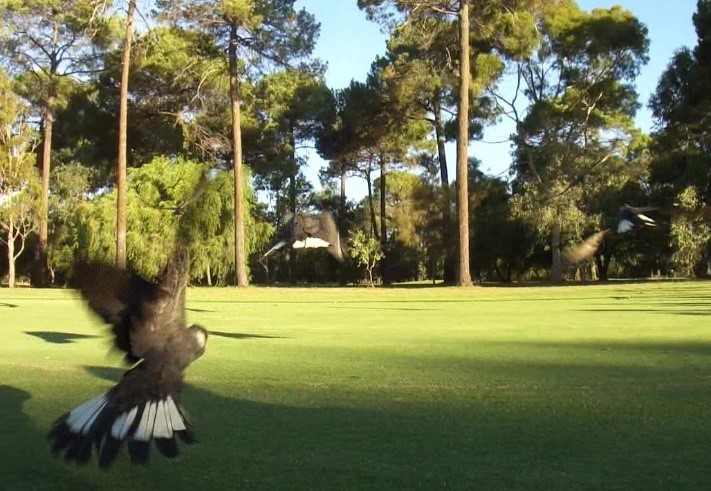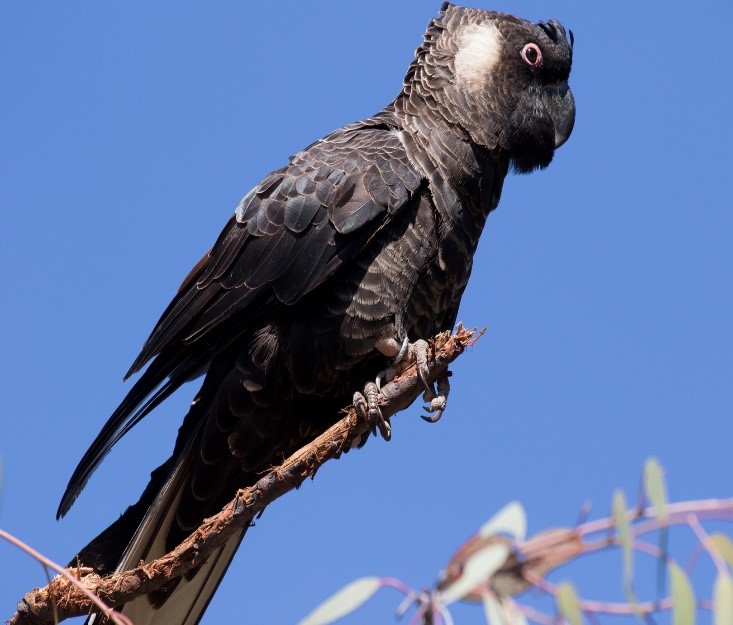
Release day, 27th February 2015. Photo by Mike Jones, Native Animal Rescue
Back on the 8th of December 2014, Native Animal Rescue (NAR) received a male Carnaby’s White Tail Black Cockatoo to rehabilitate before releasing him back into the wild. Being found alongside Great Northern Highway not far from Roe Highway as a result of being hit by a motor vehicle, this male was taken to the Perth Zoo where the wonderful veterinary staff treated him for a laceration over his keel, bruising around his pelvic area and also what x-rays showed, a fracture to his pelvis.
Once the veterinary staff at the Perth Zoo was happy with his progress, he came into NAR’s care for rehabilitation. He had been with us for just over 12months which shows how long we can have animals for. Then once we were happy with his weight, flight strength and flight ability, wildlife officers for the Department of Parks and Wildlife (Parks and Wildlife) came, assessed the bird for release and helped catch this bird along with others that were ready for release. Wildlife officers also took DNA and placed a uniquely numbered leg band on each cockatoo for release. The release was at Collier Park Golf Course which is known as a “Super Roost” site where other Carnaby’s are known to roost. On the day there was no disappointment with a large number of wild Carnaby’s in the area calling out making our ready for release birds call back to them and keen to go.

Re-sighted at a potential nesting hollow on 13th October 2015 with a female. Photo by Kayley Griffiths.
Recently we were contacted by Parks and Wildlife saying that this male was sighted on a property in the Perth hills and with great news had a female companion with him looking for a potential nesting hollow. He has been sighted twice, once back in October 2015 and now again in October of this year. With help from people in the community like Kayley Griffiths, who sighted this bird on her property and kindly supplied photos to Parks and Wildlife, Kayley was able to get some great close-up pictures of the leg band that is placed on all released birds so with resighting’s like this we can know it’s history and for future sightings, know what the bird’s activity and travel distances are.
This resighting is also exciting to know because as we have been informed, there has been only two recorded sightings by the department where a released black cockatoo has been seen with a female looking for a nesting hollow with the possibility of them breeding. NAR’s male is one of these two birds that has been injured, been rehabilitated, released and then paired up with a female in the hope of breeding. So for all of the people involved, these are exciting times for us and with continued monitoring of these birds it will give us a better understanding of their lives and successes they have.
Rehabilitating and then releasing native animals is what we’re here for and what our main goal to achieve is. To release animals back into the wild for a second chance is a great feeling with the hard work and time our volunteers put in and give. To hear news like this makes it even more special and a reward for us in particular our Black Cockatoo Team which is the ultimate outcome.

Leg bands are put onto rehabilitated and released birds. Photo by Kayley Usher.

Each bird has a unique number. Photo by Kayley Griffiths.
What a fantastic job our Black Cockatoos team do! We are so proud of them.
